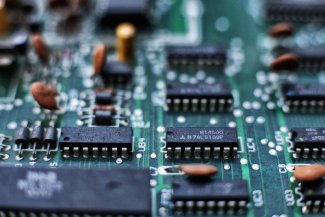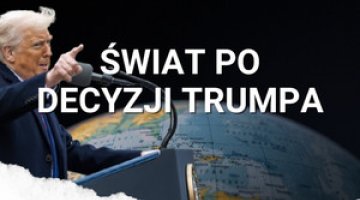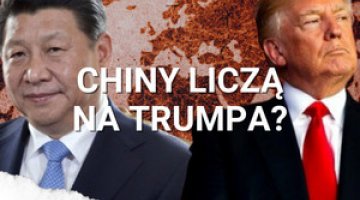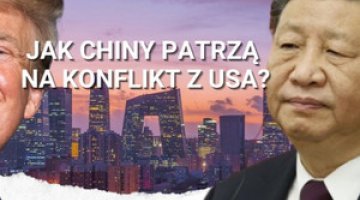The European front of the war over microchips. The Netherlands joins the anti-Chinese coalition

The Kingdom of the Netherlands has become the European leader in the technological competition with China. It has cooperated closely with the United States in this field. On 1 September 2023, it expanded its catalogue of export restrictions to include chip manufacturing equipment. So far, co-operation with the Dutch ASML company, which holds the global monopoly in state-of-the-art processor manufacturing machinery, has been of fundamental importance to China building its strategically important semiconductor sector. However, actions launched by The Hague, in coordination with the US and Japan, will significantly limit this sector’s development, as they will cut Beijing off from the necessary equipment. In response, China has modified its industrial policy goals and redoubled its efforts to dominate the global market of legacy chips. This has translated into its relatively mild response to the Netherlands’ decisions, as Chinese companies still need the Dutch technology to produce less advanced processors.
Cracks in the Chinese-Dutch cooperation
Since 2014, Beijing has been stepping up its efforts to build its own semiconductor manufacturing ecosystem in order to reduce China’s dependence on imports and to seek to achieve technological self-sufficiency. Despite its massive spending on the development of this industry (around $150 billion between 2014 and 2020), which the world’s highest spending level, China remains heavily dependent on foreign technology, including semiconductor manufacturing equipment,[1] and this is why the ASML is its strategic partner. It is worth noting that this semiconductor company is the world’s only such company to offer unique extreme ultraviolet (EUV) lithography equipment which is necessary for mass-scale production of state-of-the-art processors. At present, all key manufacturers of semiconductors below 10nm, such as the Taiwanese TSMC company and the Korean Samsung company, rely on the equipment manufactured by the Dutch giant. Due to export restrictions, since 2019 the ASML has been required to apply for a government licence to sell EUV machines. This has effectively resulted in a halt in the sale of these machines to China. The legislation passed in September expands the catalogue of restrictions to include deep ultraviolet (DUV) lithography equipment which Chinese companies have used to manufacture less technologically advanced chips.
Beijing is aware of the crucial importance of Dutch technology to the development of its semiconductor industry, and therefore over the past decade it has stepped up its industrial espionage activities targeting the key Dutch companies, increased its acquisitions of Dutch technology companies and intensified its intelligence activity at universities. Since 2015, the ASML has reported several data leaks and espionage incidents. For example, Yu Zongqiang, a Chinese-born engineer and former ASML employee, stole the source key of OPC software the company had been working on for a decade. He subsequently applied it at Xtal, a Silicon Valley company he founded, and took over Samsung Electronics, the ASML’s customer of many years. Although the Dutch holding company won the lawsuit in a US court regarding this matter, it never received the awarded compensation because Xtal was already insolvent at the time. In 2019, the China National Intellectual Property Administration granted a patent to another business owned by Yu, the Beijing-based Dongfang Jingyuan Electron Ltd company, for software which had been stolen from the ASML. The Chinese Ministry of Science and Technology praised the company as an emerging giant, and the Chinese media referred to Yu as a pioneer of China’s semiconductor industry.[2] Beijing continued this strategy and Chinese companies took over several leading Dutch technology companies, including major manufacturers (such as Nexperia) and innovative start-ups (such as Nowi).[3]
The government in The Hague has responded to China’s actions at the commercial, investment and educational levels. As regards commerce, it has coordinated its export restrictions on lithographic machinery with the United States and Japan. In the field of investment, in May 2023 it adopted legislative instruments to block foreign takeovers in strategic sectors (including the semiconductor sector), whenever they raise concerns related to national security. In the field of education, the Dutch Ministry of Education has launched a review of university programmes which have received foreign funding and is considering the decision to pass legislation to vet non-EU candidates who enrol to study at technical faculties. Although the Kingdom of the Netherlands argues that these steps are not intended to target any foreign actor, the Dutch General Intelligence and Security Service (AIVD) and the Military Intelligence and Security Service (MIVD) have identified China as the ‘biggest threat’ to the Netherlands’ technological position. The Dutch services have highlighted various aspects including illicit knowledge transfer which is mainly carried out by students and researchers who conduct research at local scientific institutions, as well as during cyber-attacks.
The Netherlands joins the US-led coalition
The Hague’s decisions are an element of pressure put on China’s semiconductor industry, which the US stepped up in October 2022. Aside from restrictions regarding the export of advanced materials of this type and the blocking of cooperation between US engineers and Chinese companies, the US legislation also prohibits all companies which use US-made technology from selling hardware, software and components which are necessary in the production of advanced semiconductors to China. Since the leading Dutch companies (such as the ASML) and Japanese companies (such as Tokyo Electron) use US-made technological solutions, US export restrictions apply to them as well. Moreover, from the White House’s perspective, efforts to coordinate the restrictions with Dutch and Japanese regulations were of critical importance in the context of their effectiveness. This is because despite the fact that Beijing has been cut off from US technology, in the next several years Chinese companies could potentially reduce the technological distance separating them from the West, if they relied on lithographic machines manufactured by these two countries.
Negotiations lasting several months resulted in a requirement being imposed on Japanese and Dutch companies (starting from 23 July[4] and 1 September 2023[5] respectively) to apply for a licence to sell selected types of advanced devices used in the manufacturing of semiconductors. To justify this policy, both Tokyo and the Hague cited national security issues, although, as it has been mentioned earlier in this text, unlike Washington they did not identify any particular country which these restrictions should target. However, the Netherlands has suggested for months that it gives priority to its relations with the US over its cooperation with China. The words uttered by Dutch prime minister Mark Rutte in February 2023 were an apt illustration of this stance. He said: “the 21st century will be a century of democracy, that is, a century of America [rather than China]”[6].
However, the agreement between The Hague and Washington regarding the restrictions on the export of lithographic machines has sparked controversy within the EU, which was due to the fact that no EU institutions were involved in the negotiation process. From the point of view of some EU member states (including Belgium), this has undermined the EU’s position in the eyes of the US and resulted from Washington’s pressure. The Dutch authorities have emphasised that export control is still within the scope of competence of individual member states. Despite this, other European companies are also affected by this legislation, including German laser manufacturers (Zeiss, Trumpf) which cooperate with the ASML, as well as high-tech research centres (such as the Belgian-based Imec and the French-based CEA).
The bottleneck of the Chinese processor market
Coordinated action by the US, the Netherlands and Japan has stripped China of access to companies which account for around 80% of the global supply of semiconductor manufacturing equipment (aside from the ASML, these include US-based companies such as Applied Materials, KLA Co. and Lam Research, the Dutch ASML company and the Japanese Tokyo Electron company). The first effects of the restrictions are already evident. Due to problems with procuring the necessary equipment, the inauguration of the Yangtze Memory Technologies Co. manufacturing plant, which is China’s biggest manufacturer of memory chips, located in the Wuhan area, has been postponed by more than a year. Alongside this, the launch of production of 28 nm lithographic machines (which have been on the global market for more than a decade) by Shanghai Micro Electronics Equipment, which was initially announced to take place in 2021, is already two years late and is not expected to happen until the end of this year.
Growing international pressure on China’s semiconductor industry has forced Beijing to adapt its industrial policy in this field to the current situation. Due to restrictions imposed by the US, Japan and the Netherlands, China has been looking for niches it can dominate in order to become involved in the operation of international supply chains as much as possible. To achieve this, it has increased its investment in production capacity of older generation chips (28 nm), which are used in the arms industry (including in rockets and radars), electric vehicles and some smartphones. Although the multilateral restrictions have curbed China’s capacity for manufacturing advanced semiconductors, they did not affect its capacity for producing 14 nm and more mature chips. China has stepped up its efforts to dominate the legacy chips sector, and announced the construction of 26 new manufacturing plants for the needs of this sector by 2026. In addition, Chinese companies have rushed to procure huge numbers of foreign-made lithography machines. Between January and July 2023, Chinese imports of Dutch-made equipment (almost exclusively manufactured by the ASML) increased by 64.8% year-on-year, and increased demand was also recorded for legacy processor manufacturing machines. Beijing’s focus on mature technology poses a threat to the planned reduction of the West’s dependence on Asia in the field of semiconductors, which has been advocated in the European Chips Act and the US Chips and Science Act. This is because competition from heavily subsidised Chinese companies may effectively discourage European and American chip producers from investing and, as a consequence, increase the Western companies’ dependence on Chinese-made older generation chips which are widely used for example in the defence industry.
Beijing’s reactions
China’s moves targeting the Netherlands should be viewed in the context of the EU-wide debate on semiconductor self-sufficiency and the transatlantic dialogue on de-risking in relations with China. The disruption of supply chains recorded during the COVID-19 pandemic and the resulting chip shortfall have significantly increased the West’s awareness of the risk linked with its dependence on Asian suppliers. This is why the European processor legislation was based on the belief that the EU should build its own semiconductor industry. From Beijing’s perspective, this carries the risk of greater degree of coordination between European and American policies, including under the EU-US Trade and Technology Council which is responsible for devising export restrictions regarding dual-use technology. Efforts to introduce modifications which are unfavourable to China were also accelerated by the G7’s stepped up rhetoric on the need to ensure smooth operation of diverse, resilient semiconductor supply chains and to harmonise trade restrictions in the field of security-relevant technology.
At the bilateral level, Beijing’s decisions targeting The Hague, which were so far intended to mitigate international pressure put on the Chinese semiconductor industry, have focused on diplomacy and trade. The Dutch-Chinese dialogue intensified following the emergence of leaked information on the planned Washington-The Hague-Tokyo agreement. In May 2023, China’s Vice President Han Zheng visited The Hague, where he was received by both Prime Minister Rutte and King Willem-Alexander, and Dutch Foreign Minister Wopke Hoekstra met with his Chinese counterpart Qin Gang in Beijing. However, the talks failed to bring about any breakthrough. In June, The Hague announced its intention to expand its catalogue of export restrictions to include semiconductor manufacturing equipment. In response to this decision, first the Chinese embassy in the Netherlands and then China’s Ministry of Commerce called on the Netherlands to protect the interests of its domestic companies and warned it that the US was “sacrificing the interests of its allies” in order to “safeguard its global hegemony”.[7]
In the commercial aspect, China responded to the Netherlands and Japan joining the US restrictions by introducing export licences for gallium and germanium as well as their derivatives such as gallium nitride and gallium arsenide. In this way, it has signalled its intention to apply retaliatory measures, although in its official rhetoric it has cited national security concerns as the reason for implementing the restrictions. China accounts for around 60% of global trade in germanium and 80% in gallium. Although these elements occur in many parts of the world, procuring them from China is the cheapest option. Gallium and germanium are essential components in the production of semiconductors to meet the demand from rapidly growing industries, such as production of electric vehicles, renewable energy and military technology.
Conclusions and outlook
Beijing’s reaction to actions launched by The Hague, which has so far been relatively mild, indicates that China is willing to maintain dialogue with this strategically important partner. Due to the Dutch decision to expand the catalogue of export restrictions, starting from this September the ASML will be unable to obtain the Dutch government licence to sell three out of its four DUV lithography systems to China.[8] As a consequence, Chinese manufacturers will be unable to manufacture semiconductors which are more advanced than 28 nm chips on a commercial scale using Dutch equipment. However, one of the ASML-manufactured systems, known as NXT:1980Di, which enables the production of processors in 28 nm technology, will still be available to China. This is of huge importance in the context of Beijing’s efforts to consolidate its international position in the legacy chips sector. Experience shows that building a semiconductor industry is only possible in collaboration with foreign partners, and that it is in China’s interest to remain an element of global supply chains.
However, it cannot be ruled out that in some time The Hague’s stance will be met with an assertive response from Beijing. This response may likely take the form of trade retaliations, as well as efforts to launch a dispute at the World Trade Organisation. China has already taken similar steps against the United States, when it initiated a trade dispute at the WTO and banned the import of products manufactured by Micron Technology, a leading US semiconductor manufacturer. At the EU level, the Netherlands’ actions increase the risk of Beijing targeting another EU country after Lithuania with its economic coercive measures. The effectiveness of the EU’s response to China’s potential moves will depend on the pace of work on the anti-coercion instrument (ACI) which is due to come into effect this autumn. The launch of counter-sanction mechanisms, such as the ACI, may result in the conflict’s internationalisation and involvement of major EU partners in it.
The US will continue its policy of putting technological pressure on Beijing. It will also seek to coordinate its actions with its allies which have access to critical technologies. Due to the ASML’s strategic importance, The Hague will likely remain Washington’s main technology partner in Europe. In the situation of mounting pressure from the White House, China will attempt to undermine transatlantic relations by continuing to criticise de-risking and stepping up its arguments highlighting the harmful consequences of US policies for the EU’s economy. In extreme scenarios, China could use the current dependencies, for example in the export of rare earth elements, to introduce blockades targeting the US and the EU. It already launched similar steps against Japan back in 2010 following the escalation of the territorial dispute over the Senkaku/Diaoyu islands. At that time, it officially cited environmental concerns as the reason for the decision. In 2022, China accounted for 70% of global rare earth element mining and for 85% of activities involved in processing these elements’ ores. In the long term, however, the decision to impose export restrictions on these elements could reduce the West’s dependence on China in this field, which in turn could jeopardise Beijing’s strategic interests.
[1] China’s New Semiconductor Policies: Issues for Congress, Congressional Research Service, 20 April 2021, crsreports.congress.gov.
[2] 国家级专精特新“小巨人”企业名单公布,东方晶源上榜! [Dongfang on the list of domestic ‘small giants’], Dongfang Jingyuan Electron Ltd, 23 August 2021, dfjy-jx.com.
[3] On the basis of the act on investment control, the Dutch government is currently checking the takeover of Nowi for potential impact of this transaction on national security.
[4] Press Conference by Minister Nishimura (Excerpt), Ministry of Economy, Trade and Industry, 31 March 2023, meti.go.jp.
[5] ‘Government publishes additional export measures for advanced semiconductor manufacturing equipment’, Government of the Netherlands, 30 June 2023, government.nl.
[6] ‘Met steun aan Oekraïne verdedigen we onze manier van leven’, NRC, 20 February 2023, nrc.nl.
[7] ‘China urges Netherlands not to abuse export control’, The State Council Information Office, 3 July 2023, scio.gov.cn.
[8] According to the company’s statement, the ASML will continue to export its machines until the end of 2023.




